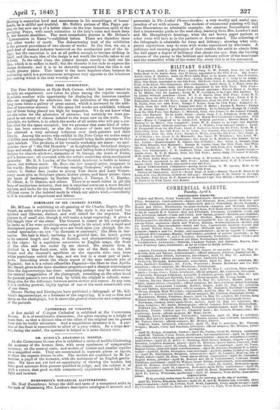THE FREE EXHIBITION.
The Free Exhibition at Hyde Park Corner, which last year seemed to be only an experiment, now takes its place among the regular annuals. It affords another wide opportunity for displaying the immense number who are struggling for admission into the profession of the artist. The long room forms a gallery of great extent, which is increased by the addi- tion of transverse screens. In this space 531 works are exhibited, without av of them being placed too high for inspection. We do not know what are the rules for the admission of pictures; but certainly we were pre- pared to see many of classes inferior to the worst now on the walls. The principle, we believe, is to admit the works of all artists who will pay a cer- tain rent for the space occupied; but we presume that some kind of selec- tion has been exercised; or else the advance of taste and knowledge has attained a very salutary influence over daub-painters and their friends. Among the artists who exhibit in the Free Corps we notice many of ability and standing-Mr. Edward Corbould being facile princeps in this open market. The products of his versatile workshop are many: an anti- quarian view of " the Old Hostelrie " at Knightsbridge, Scriptural designs large and small, sketches of girls swinging and falling from a rocking-plank, designs for church-windows, statuettes of St. George, the death of Rufus, and a horse-race; all executed with the artist's somewhat ultra-mechanical dexterity. Mr. R. S. Lauder, of the Scottish Academy, is fertile in history pieces, not without merit. Mr. Buss, the low comedy artist, reappears in the world; Manley paints " Waverley reading Shakspere," with much cha- racter; C. Dukes does justice to young Tom Jones and Lucy Waters: many more give us Scripture pieces, history pieces, and fancy pieces; there are hosts of landscapes by Reuben Sayers, J. Thorpe, J. C. Bentley, W. Oliver, A. 0. Deacon, and others. There is so much talent in :all this heap of meritorious industry, that one is surprised not to see a more decided success, and looks for the reasons. Probably a very widely influential and efficient cause is the isolated mode in which our artists work,-manifestly as it is wasteful of experience and labour.


























 Previous page
Previous page